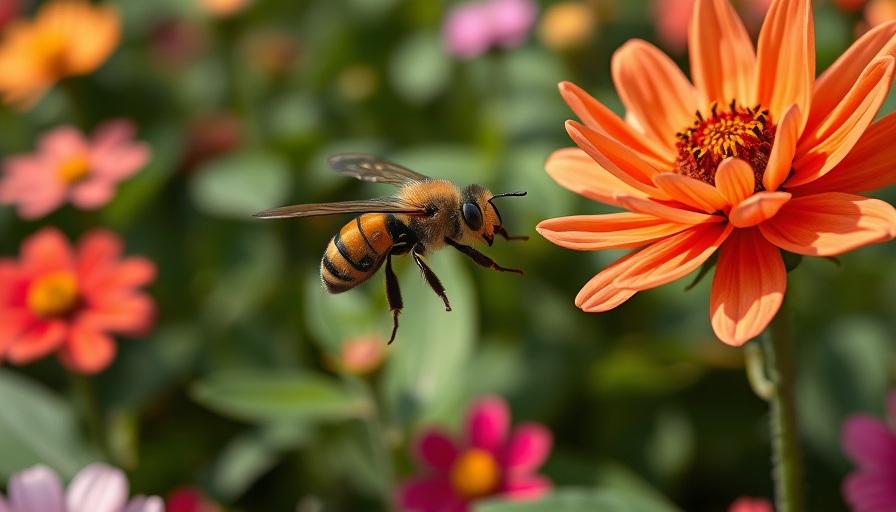
RoboBee's Flight Redefined: The Science Behind Its Landing Innovations
As technology advances, the boundaries of innovation are continually pushed, revealing the incredible potential fauna around us holds for robotics. The RoboBee, developed by the Harvard Microrobotics Laboratory, exemplifies this intersection of nature and technology. This tiny flying robot has recently undergone a transformation that enhances its landing capabilities, drawing inspiration from an unlikely source: the graceful crane fly. Weighing in at just a tenth of a gram and boasting a wingspan of only 3 centimeters, the RoboBee had previously struggled to land effectively due to its delicate design and lightweight frame. With significant advancements now in place, its flights can finally end in a gentle touchdown rather than a chaotic drop.
Lessons From Nature: Understanding the Crane Fly's Design
The innovative engineers at Harvard drew direct inspiration from the crane fly’s natural adaptation for landing. Crane flies, often mistaken for mosquitoes, are nimble creatures that can perch gracefully despite their size. By closely observing their long, jointed legs and how they distribute weight when landing, the team redesigned RoboBee’s landing gear to mirror these organic principles. The newly integrated, elastic jointed legs help the micro-robot absorb impact, protecting its vital components while allowing for a landing on various terrains, including solid surfaces and leaves.
The Technical Upgrades: From Controllers to Controllers
Alongside its structural redesign, the RoboBee has received an essential software upgrade. The updated controller has been engineered to adapt its descent dynamically, allowing for precise calculations of landing speed and trajectory in real-time. This innovation focuses specifically on the challenges unique to small, lightweight flying creatures, overcoming issues like ground effect. Ground effect refers to the instability caused by air vortices created by flapping wings as they approach the surface. The innovative data-processed decisions enable the RoboBee to manage the turbulence better, ensuring a smoother descent.
Future Applications and Technological Impact
The implications of successful innovations in microrobotics extend far beyond academic triumphs. The RoboBee’s improvements open doors to numerous applications including environmental monitoring, search and rescue missions, and agricultural pollination. As these tiny robots become more reliable, industries dependent on aerial navigation will find a robust ally in the RoboBee. Furthermore, lessons learned from these developments in robotic technology may find their way back into improving the design and functionality of drones and other flying machines.
RoboBee: A Glimpse into the Future of Robotics
The enhancements to RoboBee mark a pivotal moment in the convergence of aerodynamics and robotics, showcasing how studying nature promotes technological advancements. With robotics becoming an integral part of everyday life, innovations like the RoboBee serve as a testament to the creative potential borne from understanding the world around us. Looking ahead, the seamless fusion of biology and technology could help shape a future where human-designed machines operate with the precision and ease of their biological counterparts.
Final Thoughts: Why Innovations Like RoboBee Matter
The evolution of the RoboBee highlights vital lessons in design thinking and the significance of looking to nature for inspiration. As we navigate the technological landscape, it becomes increasingly clear that sustainable innovation may depend on our ability to harmonize with the ecosystem. For residents in urban areas like Dallas, where technological applications are becoming part of the lifestyle, understanding such advancements can inspire curiosity and engagement with broader scientific phenomena.
 Add Element
Add Element  Add Row
Add Row 



Write A Comment